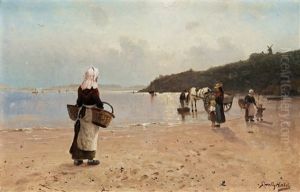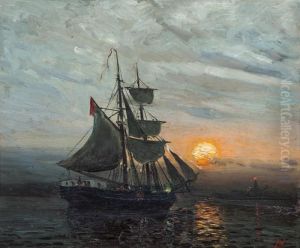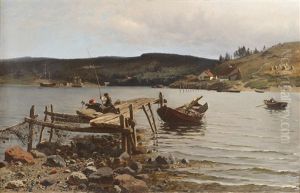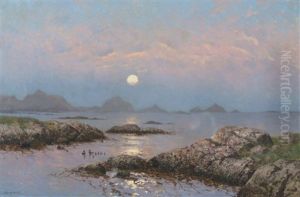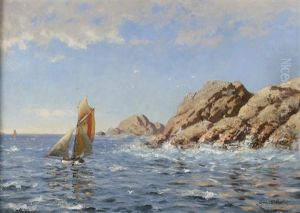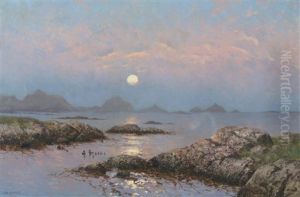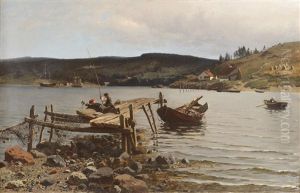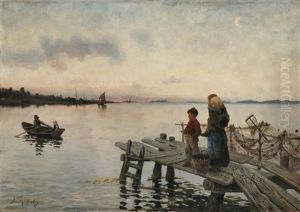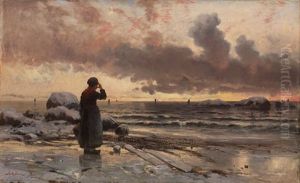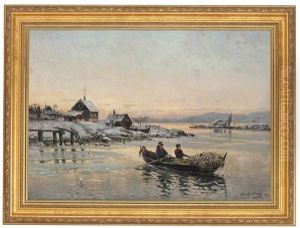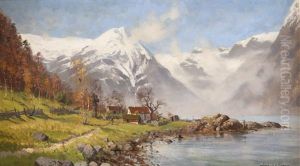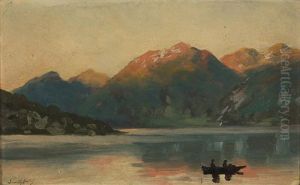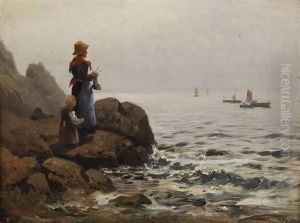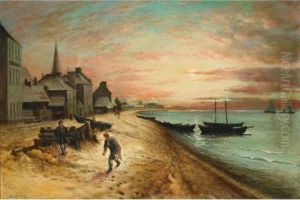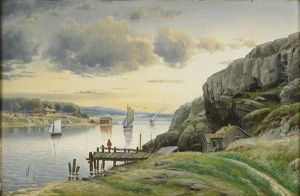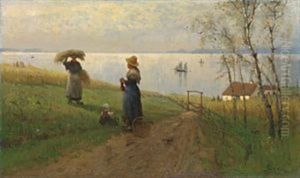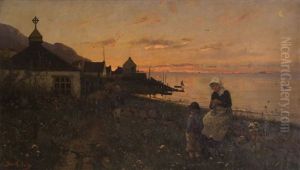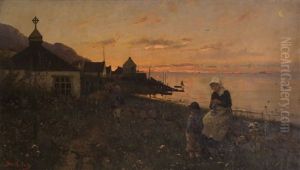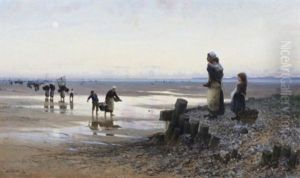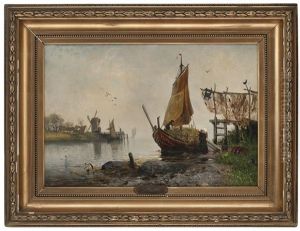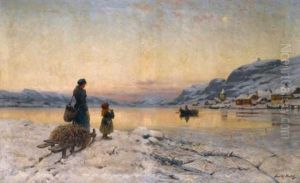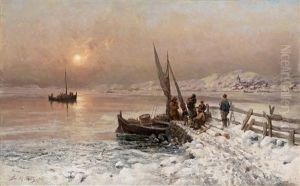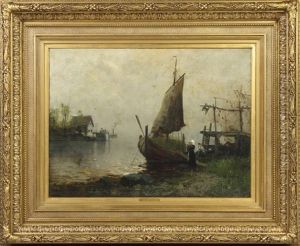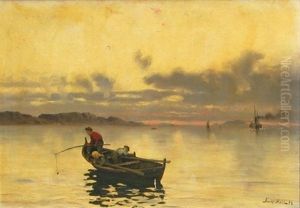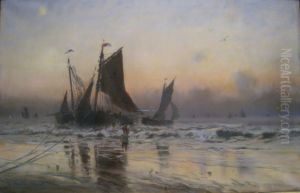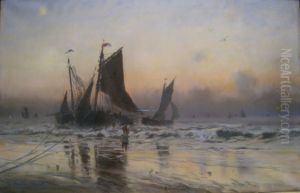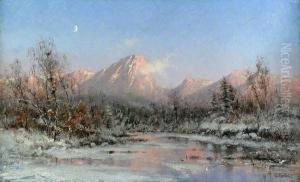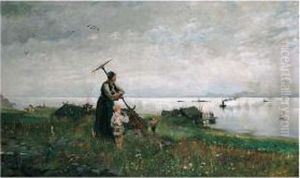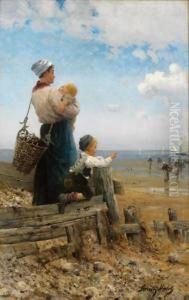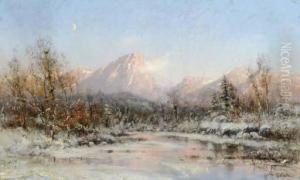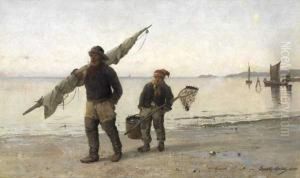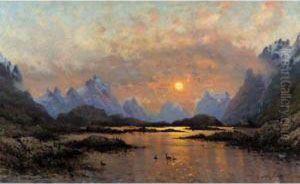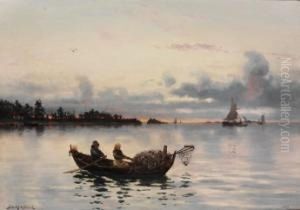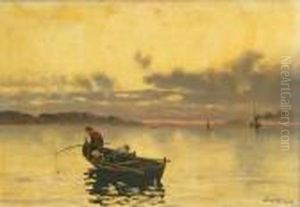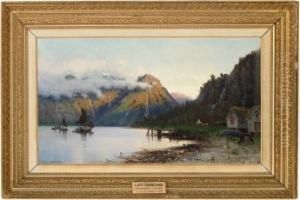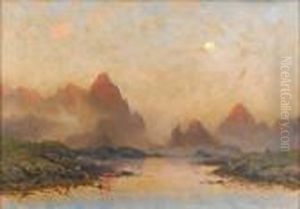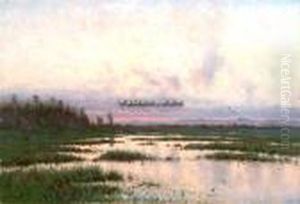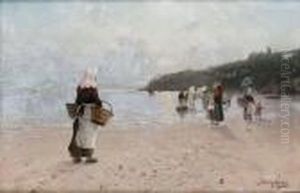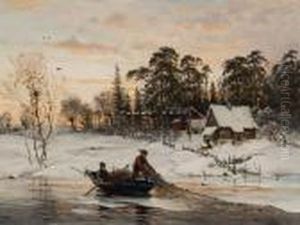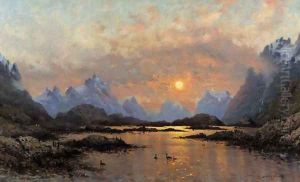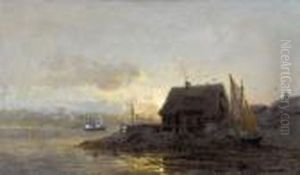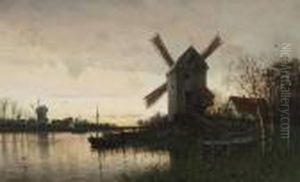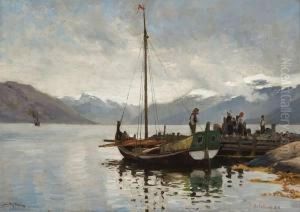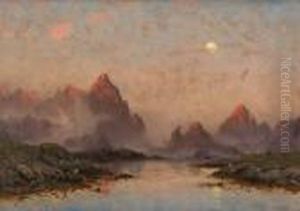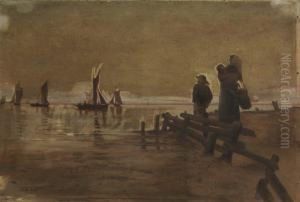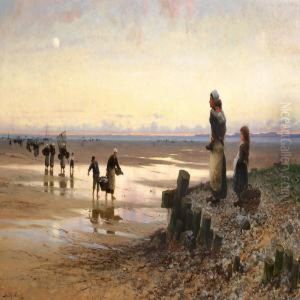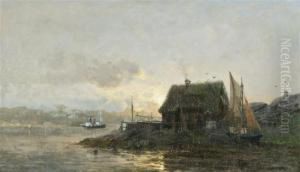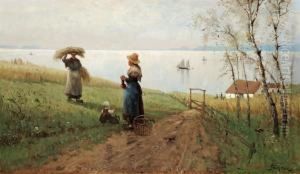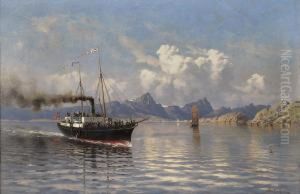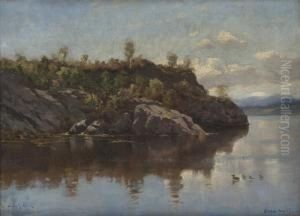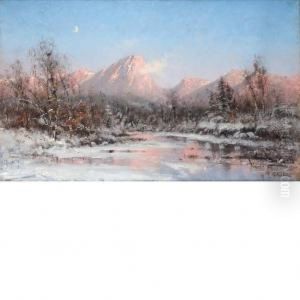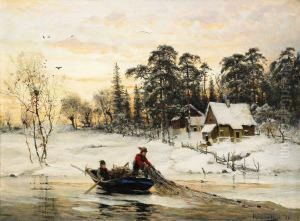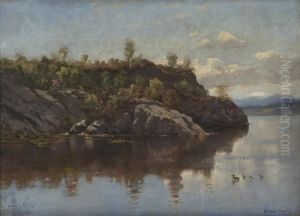Frithjof Smith-Hald Paintings
Frithjof Smith-Hald was a Norwegian painter and graphic artist whose work is less known internationally but holds significance in the Norwegian art scene. Born on December 28, 1882, in Kristiania, now known as Oslo, Norway, Smith-Hald grew up during a period of strong national romanticism in Norwegian art, which influenced his early works.
He studied under the guidance of Christian Krohg, a renowned realist painter who was a central figure at the Oslo National Academy of the Arts. Smith-Hald’s education under Krohg deeply impacted his artistic development, emphasizing the importance of portraying everyday life and the working class with a sense of realism and dignity.
During his career, Smith-Hald was particularly noted for his landscapes and scenes of rural life, which often depicted the Norwegian countryside with a combination of realism and romantic idealization. He was also known for his graphic work, including woodcuts and etchings, which displayed a strong sense of form and attention to the textural qualities of his subjects.
Smith-Hald’s style evolved over time, showing influences from various art movements, including Impressionism and later, Expressionism. However, despite these stylistic shifts, his work consistently maintained a sense of national identity and cultural heritage, which was important in the context of Norway's newly gained independence in 1905.
Throughout his career, Smith-Hald exhibited his works at various shows and was involved in the artistic community in Norway. His contributions to Norwegian art were recognized by his peers and art critics of the time.
Frithjof Smith-Hald continued to paint and create graphic works until his death on March 29, 1946. Although he may not be widely recognized outside of Norway, within his home country, his art remains a testament to the Norwegian spirit and landscape of the early 20th century.
